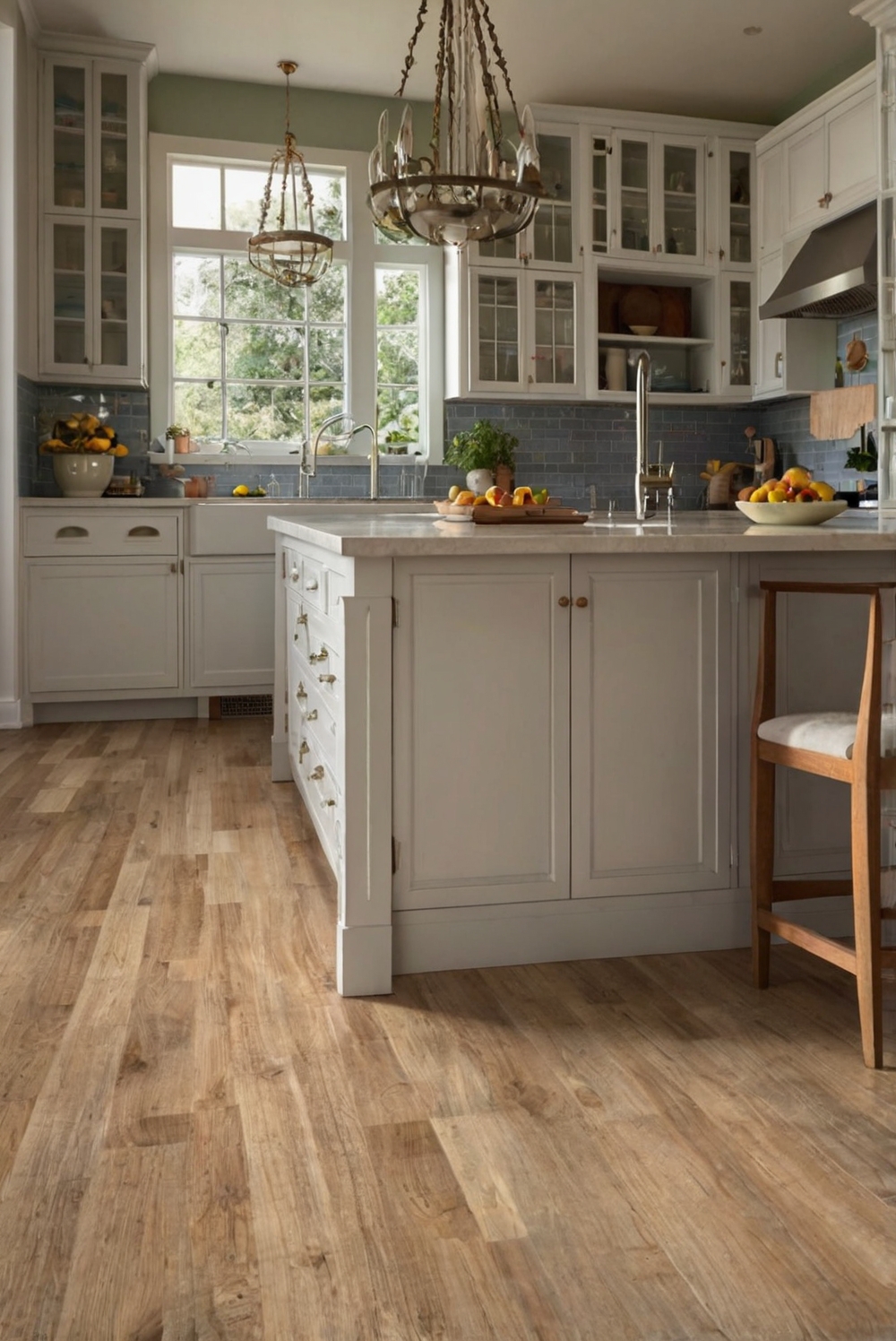Discover the effortless charm of easy-to-repair kitchen flooring materials in this daily routine post for interior designers. Explore top options for hassle-free maintenance and replacement.
Ceramic and luxury vinyl flooring are easy to repair and replace in the kitchen. Ceramic tiles are durable and can withstand spills, stains, and scratches. If a tile gets damaged, you can easily replace just that tile without redoing the entire floor. Luxury vinyl is also a great option for easy repair and replacement. It is water-resistant and can mimic the look of expensive materials like hardwood or stone.Both materials are low-maintenance and perfect for busy kitchen areas. It is essential to keep extra tiles or vinyl planks on hand for quick replacements and to follow proper installation guidelines for longevity.
For more home decorating tips and interior design ideas, visit our website or consult with professional designers.
Which kitchen flooring materials are easy to repair and replace?
When it comes to kitchen flooring, it is essential to choose materials that are not only durable but also easy to repair and replace. Here are some options that fit the bill:
Laminate Flooring:
Laminate flooring is a popular choice for kitchens due to its affordability and easy maintenance. In case of damage, individual planks can be easily replaced without having to redo the entire floor. Laminate flooring is also resistant to stains and scratches, making it a practical choice for high-traffic areas like the kitchen.
Vinyl Flooring:
Vinyl flooring is another cost-effective option that is easy to repair and replace. Like laminate, vinyl planks can be replaced individually if damaged. Vinyl flooring is also water-resistant, making it ideal for kitchens where spills are common. Additionally, vinyl comes in a wide range of styles and designs, allowing you to choose a look that suits your kitchen decor.
Tile Flooring:
Tile flooring, especially ceramic or porcelain tiles, is a durable and easy-to-maintain option for kitchens. In case of a cracked or damaged tile, it can be removed and replaced without affecting the rest of the floor. Tile flooring is also resistant to moisture and stains, making it a practical choice for kitchen areas prone to spills and splashes.
Wood Flooring:
Wood flooring, while not as easy to repair as laminate or vinyl, can still be a good option for kitchens if maintained properly. Scratches and minor damage can be sanded and refinished to restore the flooring’s appearance. Additionally, wood flooring adds warmth and character to a kitchen, making it a popular choice for homeowners looking for a natural aesthetic.
Cork Flooring:
Cork flooring is a sustainable and comfortable option for kitchen floors. While it may not be as common as laminate or tile, cork is easy to repair by sanding out scratches and applying a new coat of sealant. Cork flooring is also resistant to mold and mildew, making it a healthy choice for kitchens.
In conclusion, when choosing kitchen flooring materials that are easy to repair and replace, laminate, vinyl, tile, wood, and cork are all viable options. Each material has its unique benefits and considerations, so it’s essential to weigh your preferences and lifestyle needs before making a decision. By selecting a flooring material that is durable, easy to maintain, and can be repaired or replaced as needed, you can ensure a functional and attractive kitchen space for years to come.

